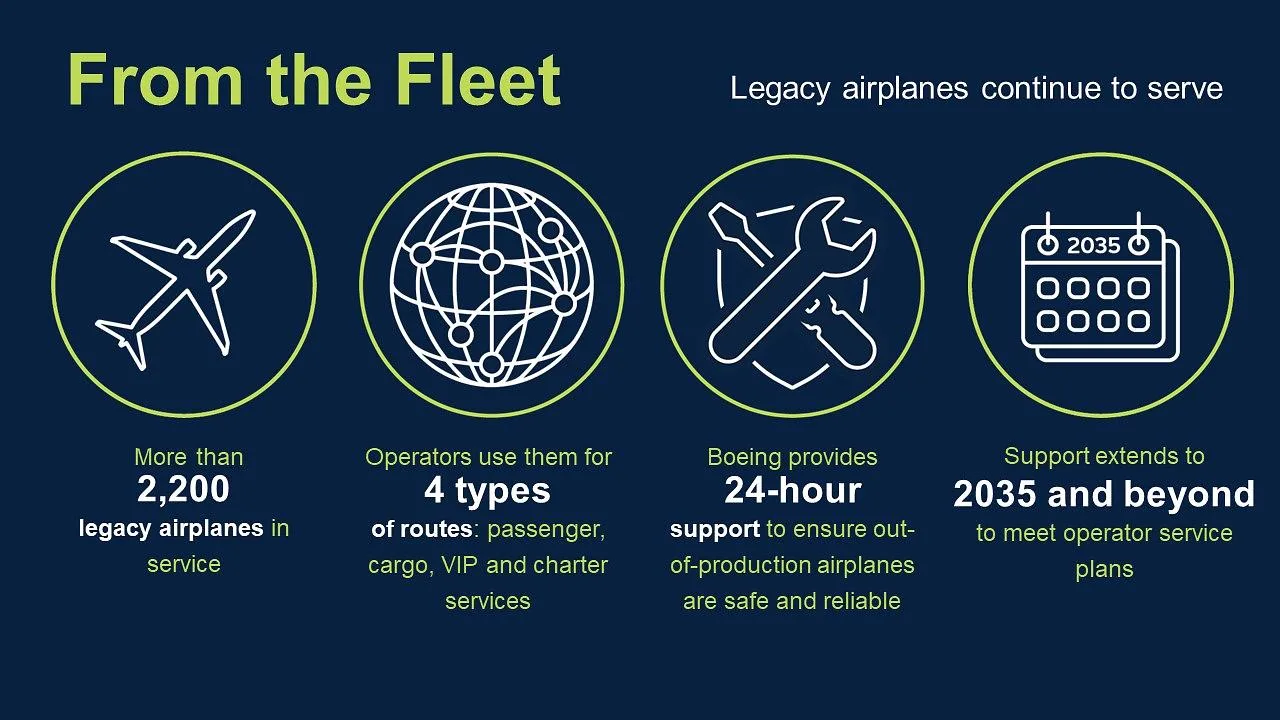From Nolinor and Boeing:

In the remote expanse of northern Canada, a 737-200 regularly lands on a gravel runway, a capability unique to this commercial jet.

It is one of six 737-200s – the earliest of which rolled off the production line in the mid-1970s – that enable Nolinor Aviation, a Canada-based multi-service charter and cargo operator, to accomplish everything from supply of commercial mining operations to the support of Canadian forces during emergencies.

Out-of-production fleet
Nolinor’s fleet includes some of the more than 2,200 out-of-production and legacy airplanes that remain in service today — from the 747, which concluded production in 2023, to the 707, which last rolled off the production line in the early 1990s.
Boeing’s Customer Support team provides engineering support and technical advice, and partners with operators to secure parts for the out-of-production fleet. This fleet includes propeller-driven DC-3s and four-jet-engine DC-8s from legacy companies Douglas Aircraft, McDonnell and the merged McDonnell Douglas.
Why it matters
Large airlines, charter companies, emerging startups, freight companies and governments use legacy airplanes for a variety of reasons, including efficiency, versatility and unique characteristics and abilities. Multiple U.S. and global carriers operate at least three out-of-production or legacy company models in their fleets for daily routes.
In many cases, these airplanes are the preferred or only way to perform certain cargo, passenger or VIP transport roles. The decision to continue operating the fleet is based not only on Boeing’s support, but because of the inherent capability the airplanes have and proven reliability over decades of service.
“We don’t like to call them old aircraft, we like to call them experienced aircraft. Our biggest pride is to be able to go somewhere nobody can go… We will go to places where they have not seen a jet in years.” – Marco Prud’Homme, President of Nolinor Aviation
Sustained partnership
Boeing’s level of support is established in partnership with customers because they are the final word on how long an airplane can remain in service, Customer Support leaders said. In many cases, that could stretch to at least 2035 – and beyond. Operators can maximize their airplanes’ performance through their own specialized enhancements. For example, Nolinor invested in enhanced avionics and airplane structures to maximize the capabilities of its 737-200s.

Creative thinking required
Creativity and foresight are key to developing solutions to help keep older airplanes flying safely and reliably until retirement.
“The creativity of solutions ends up taking the forefront,” said Brian Keller, senior deputy fleet chief for legacy airplanes in Boeing Customer Support. “Operators ask us to support until end of life, and it’s our intent to support them. There’s a lot of passion within our team and across operators to partner in this way.”
For instance, Boeing and an operator can invest with a supplier to keep some components in production or source a retired airplane to harvest parts to keep another airplane in service. “Having the support of the manufacturer for us is a real game changer”, Prud’Homme said. “It’s a completely different ballgame for us.”
Video:
Nolinor aircraft photo gallery:


